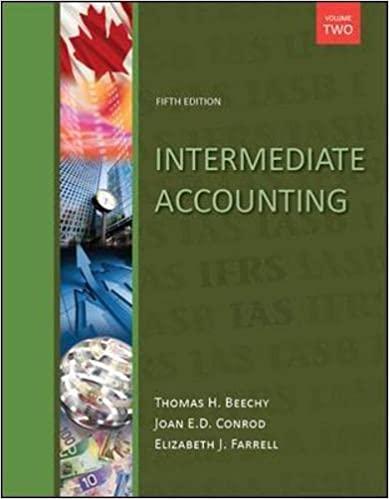Warmth Home Comfort Limited (WHCL) is a Canadian manufacturer of furnaces and air-conditioning units. The company was
Question:
Warmth Home Comfort Limited (WHCL) is a Canadian manufacturer of furnaces and air-conditioning units. The company was acquired by a group of 15 investors eight years ago. Three of the investors are senior managers with the company, including Jacob Kovacs, who is president and chief executive officer.
Over the years WHCL had been quite successful, but it has struggled in the face of increased competition from overseas competitors. The owners believe that three years from now WHCL will be poised to be a major player in the Canadian and the U.S. heating and cooling markets and may consider going public. Kovacs points out that the company's financial performance seems to be improving, given the smaller loss in \(20 \times 7\) and the increasing revenues after two years of falling sales.
Your firm has been auditor of WHCL since its first audit in 20X0. It is now January 20X8. This is the first year you are in charge of the audit. Yesterday, you visited WHCL and met with key personnel to discuss the forthcoming audit engagement. You obtained the following information.
1. In early fiscal \(20 X 7\), the company increased its debt load significantly by borrowing \(\$ 300,000\) from Colo Investors Ltd. Excerpts from the loan agreement are as follows:
Warmth Home Comfort Limited (the borrower) covenants that:
a. A current ratio of 1.2 or higher will be maintained; and
b. The debt-to-equity ratio will not exceed 2:1. Debt is defined as all liabilities of the company.
2. In \(20 \times 1\), WHCL introduced a new model of gas furnace that was popular with consumers because its reduced gas consumption resulted in lower heating bills. The furnace design has remained virtually unchanged since it was introduced. The furnaces are sold with 10 -year warranties on parts and labour. Historically, claims have been minimal.
In the summer of \(20 X 7\), several warranty claims were made against WHCL. Routine inspections by gas-company employees revealed cracked heat exchangers, which could leak gases that might cause health problems when mixed with warm air in a home. Thirty claims were made, and WHCL paid for repairs. The cost of repairing each furnace was \(\$ 150\), which was expensed by WHCL.
Jacob Kovacs believes that the furnaces were damaged because of poor installation by contractors. He cannot see more than an additional 40 or 50 units being damaged. The 30 repaired furnaces were manufactured in 20X5 and 20X6. Over 10,000 units of this model have been sold over the past seven years.
Later, in a discussion with the chief engineer, you learn that she had examined the heat exchanger used in the gas-furnace model in question and saw no evidence of a design flaw. However, she expressed concern that the problem might be due to heavy use of the furnace. She noted that the 30 reported problems were in northern locations where the demands on the equipment are considerable. Between 1,500 and 2,000 furnaces were installed in homes in those locations.
3. In January \(20 X 7\), WHCL bid on and won a \(\$ 1.05\) million contract to supply heating and air conditioning equipment for a large commercial and residential project. Construction on the project began in March 20X7.
The fixed-price contract calls for WHCL to start delivering and installing the equipment in early September 20X7. In addition, WHCL has agreed to pay a penalty if the project is delayed because WHCL is unable to meet the agreed-to timetable. A brief strike by its factory employees has caused production and delivery to lag about two weeks behind schedule, so WHCL is shipping units as soon as they are produced. According to the agreement, half of the equipment has to be shipped and installed at the project site by the end of February 20X8. Jacob Kovacs is confident that WHCL will be able to catch up to the promised timetable.
In \(20 X 7\), WHCL recognized \(\$ 350,000\) of revenue based on the number of units shipped to year-end. WHCL has received \(\$ 50,000\) for the units that have been installed by year-end.
4. Starting in February 20X8, WHCL will begin offering customers the option of paying a monthly fee for the use of a furnace. At the end of a certain number of years, the customer can purchase the unit for a nominal amount or ask for a replacement furnace and continue with the monthly payments. WHCL will do all maintenance at no cost until a customer purchases the unit. This scheme is intended to help WHCL remain competitive. The terms for such arrangements have not been finalized, but Jacob Kovacs is confident that they will increase sales revenue. Jacob has asked for advice on how to account for them.
Your partner asks you to prepare a memo for him outlining the accounting issues that came to your attention as a result of your visit, applying IFRS.
Required:
Prepare the memo.
Step by Step Answer:






